Update 09dec15
When this article was first published, we called this version of Meidjo v2. Since then M-Equipment has made further changes rendering this version 1.2 (retroactively) and subsequent changes in December 2015 as v2.0. Please excuse any confusion on versions below.
Those who stood by and watched while the first wave of Meidjos was beaten upon the shores of reality will be thankful they waited. The M-Equipment’s founder and inventor, Pierre Mouyade, recently detailed the numerous changes that have been made to improve the durability and functionality of Meidjo (pr: may’-zho).
Meidjo is the first telemark binding to connect to a boot via Rottefella’s patented NTN second heel and tech inserts at the toe. The result is a binding that has the touring efficiency of Dynafit, with step-in convenience, safety release (verified but uncertified), and moderately active telemark performance.
Fixing the Pins
The first thing customers noticed if they went on a tour is that the walk mode that was supposed to prevent the toe pins from tripping open didn’t actually work under the typical pressure created when stomping on an icy traverse. The lock mechanism worked but the four rods inside the springs that squeeze the toe pins together would bend, allowing the jaws to flex open. The rods were made of stainless steel which is softer than it should be. In some cases these bent permanently, so that the jaws would no longer rest upright when closed which made getting in or out difficult, and compromised the integrity of the connection. Those internal rods are now made with hardened steel.Fixing the Plastic
Two things were done to improve the durability of the plastic parts. First, the composition was changed to include more fiberglass. Pierre Mouyade said, “this is the same plastic composition used by Rossignol and Salomon on their [alpine] bindings.”Secondly, wall thickness’s were increased in stress zones while also rounding most corners to prevent cracking. For instance, the outer walls of the spring tubes was increased. The spring box mates with a flex plate whose corners are also rounded.
Fixing the Mode Lock
Not everyone experienced broken plastic parts, but almost every Meidjo customer realized, even before they failed, how flimsy a piece of velum tape was to release the touring loop holding the claw down for touring. The current version now has a metal tab you can grab integrated with the locking hoop. I might still add a longer tab of Scotch 893 tape to grab for releasing the claw, but the metal prong will be a more reliable way to release the tour lock.Bumper
The bumper of plastic that is used to cock the claw into a raised position so it can slip over the second heel has been modified to use a pan headed screw in front so the plastic bumper doesn’t crack when screwed down, and to offer a scale for setting spring tension. Both nice improvements over ver. 1.
Heel Post
Fixing the collapsing climbing post required pitching it forward a few degrees so that it will tend to lean forward, locking it upright, instead of dead vertical where it would inevitably fall flat. To compensate for this slight, forward position when upright, ribs were added to the top surface of the plastic post so that it contacted the boot heel along the full width of the post, not one edge. A minor, perfectionist touch.
Conclusion
Most of these improvements are obvious and in all likelihood will address most if not all the issues experienced with Meidjo ver. 1. If you have purchased Meidjo recently, this post should confirm you have the latest version. For those who bought early (S/N less than AA00149), either return your binding via the retailer you bought it from, or direct through M-Equipment.It will take more time in the field putting Meidjo through the gauntlet of real world abuse to confirm these updates cure what ailed the version 1. Still to come are integrated ski brakes, an optional ski crampon, and a low-tech heel unit should you want to be able to easily switch between a free or locked heel. Estimated delivery for those options will be late Fall 2015. It may not be the grail of tele bindings, but with light weight, easy entry, safety release, a sweet turning sensation, and efficient touring it sure glitters.
If you have NTN boots and think these improvements are enough, I suggest you beat the demand that is sure to come next fall. Most telemarkers may be satisfied with their current rig, but if your boots are getting soft prudent pinheads will start shopping for an NTN tele boot with tech inserts. The choices are currently contracting. With any luck, interest in Meidjo could spur growth in tele equipment sales enough that we’ll see some new choices in tele boots.
We can dream. It can happen.
The M Equipment
Meidjo
MSRP: €540
Weight/binding: 1 lb. (490 g)
Sizes (mondo): Small (22.5-26.0), Large (26.5 – 30.5)
© 2015

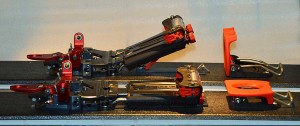
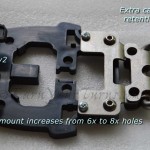
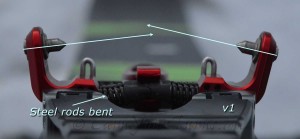
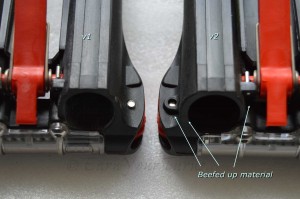
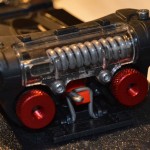
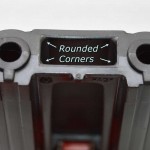
9 comments
Skip to comment form
Great to see the M Equipment continues to improve this binding. This will be my next tele binding for sure. One thing I really want to see is brakes – I don’t want to have skis tethered to my feet in an avalanche. Any news on the brakes?
I really don’t get why M-equipment doesn’t just use a stock (e.g. Dynafit) toe piece, to avoid any issues with the toe. Why reinvent this particular part of the wheel?
Why do fat skis, why not skinny? Tech toes are like wheels or tires, skis, boots, etcetera; the differences in dimensions may improve performance. Those that are not will be eliminated by Darwinian economics.
Any news on the integrated ski brakes, an optional ski crampon, and a low-tech heel unit? In particular the locking heel
All part of v2.0, but the heel probably won’t be available stateside until late December 2015. Maybe earlier, but not with confidence. Brakes are now standard. Crampon clip is extra, plus you need to provide your own crampons. Made to work with Dynafit brand crampons or other compatible copies. I know four shops trying to carry it here, but don’t know how that will turn out.
Has anyone seen a document that lays out the differences between version 1.2 vs. version 2.0?
The differences are detailed in the update on Meidjo v2.0, here: https://www.earnyourturns.com/33096/meidjo-update-details-for-v2-0/
I’ve just spent a week of resort skiing and tree-bashing on the Meidjo 1.2s and I’m quite impressed. I was coming off a 10 year old pair of Hammerheads, and while I don’t quite have resistance on the Meidjo’s tuned like I did with my old set up I quickly adjusted to the change and found two things: 1) the lateral stability on the Meidjo is superior to the old cable and underheel setups, and 2) these bindings really allow for quick transitions. They also released twice at appropriate moments, and there were no inappropriate releases.
Having put them through a bit of an acid test as regards bashing around on mixed snow, moguls and tight trees my concerns around durability are much less- although I will be doing a week of backcountry next month and will give them more of a test on the up track. Once that is done I am going to retrofit them with brakes and then finally achieve telerapture.
My final comment is that having moved back to North America it was nice to see so many telemarkers zooming around Colorado slopes. In Europe tele seems to have mostly died out, except for a small hardcore of French dudes around Chamonix. Over the last few years I bought most of my gear through TelemarkPyrenees, and if you want to get the latest and greatest Medijo setup they seem to be the people to go to. (and they also maintain a link to the Telemarcouer Tshirt which has some very funny tele-centric shirts on offer).
This is almost a great binding. I like everything about the Meidjo 2.0 except I am having problems with the way the brakes work and the durability of the brake system.
I have 7 days (6 resort skiing and 1 day of sidecountry ) on the Meidjo 2.0’s, using new Scarpa TX Pros. The 2.0 skis very well tele or alpine. Nice flex. Very good control. It’s easy to adjust.
ISSUES: (I’ve emailed the owner 7 days ago and he has not responded to me thus far. He was very responsive when I ordered the bindings from him).
FIRST ISSUE: The toe of the binding has these two red “boot stop” tabs that allow you to slide your boot into the binding and have the toe holes perfectly aligned with the pins. Put your boot all the way forward to the red boot stop tab, then step down. Sounds like a dream, right? Well it would be were it not for the the brake actuating tab. This spring loaded, black plastic brake actuating tab that is depressed when you step onto the binding to retract the brake into the binding. The boot sole contacts the actuating tab prior to the boot coming in contact with the red boot stop tabs and then the ski slides forward before you are able to get everything lined up. When on snow, skis slide forward on snow when you push on them. It is possible to get into the bindings, but it becomes a very delicate game to get the boot lined up and the tech pins engaged. If you aren’t clicked into the binding then this is an issue. It’s not impossible, but it’s not easy. I used to work ski patrol and always imagined a step in tele binding would increase response time to a wreck. With this described brake issue, I’d say getting in is normally slower for me than just using a standard cable binding. I imagine this could all be even more problematic in deep pow on uneven terrain or the side of a steep slope.
SECOND ISSUE: Half of the plastic brake actuating tab just snapped today (The part that you step on to retract the ski brakes). I have no idea when or how this happened. I had a normal day on the slopes, then just got home and noticed a plastic piece was snapped off.
I believe the Meidjo version 2.0 is their first attempt at using a ski brake, ie lets call the brakes “ski brake 1.0”. I really like everything else about the binding so I hope they release a version “2.0” brake soon. If you are in the market for the Meidjo I say go for it, just wait for them to improve the brakes.